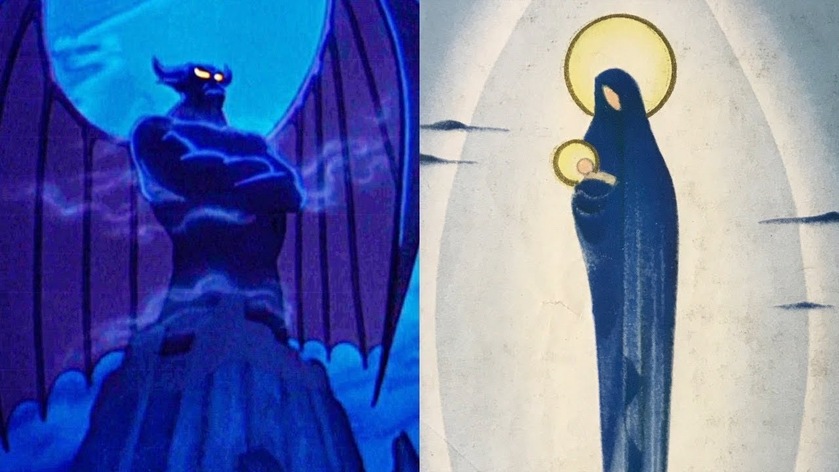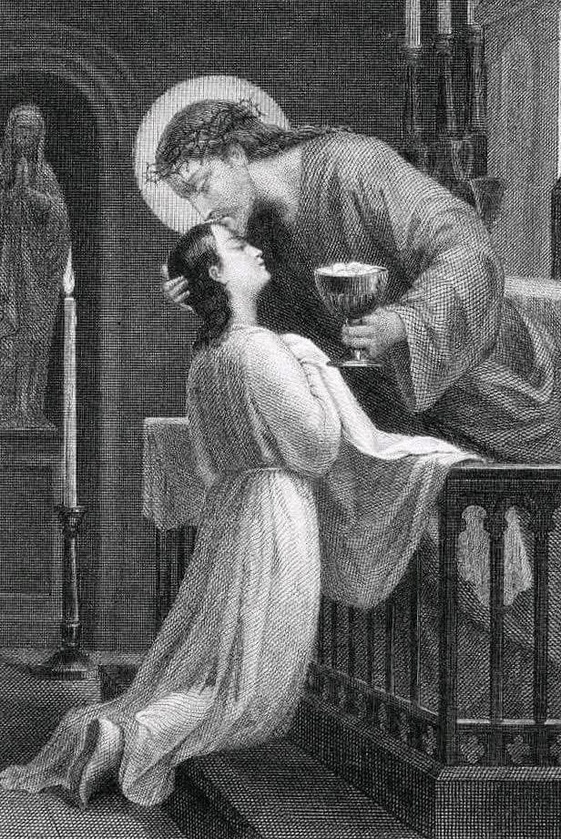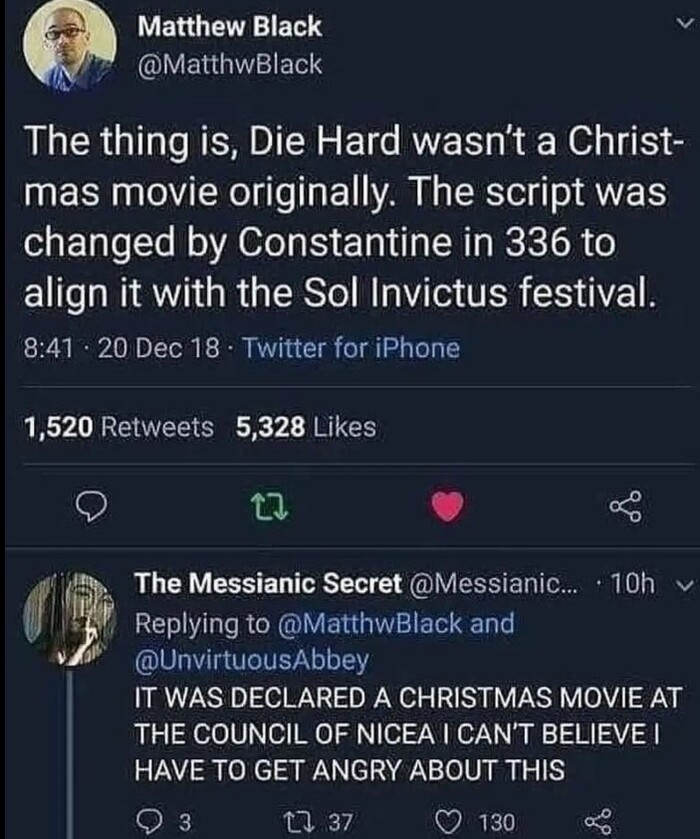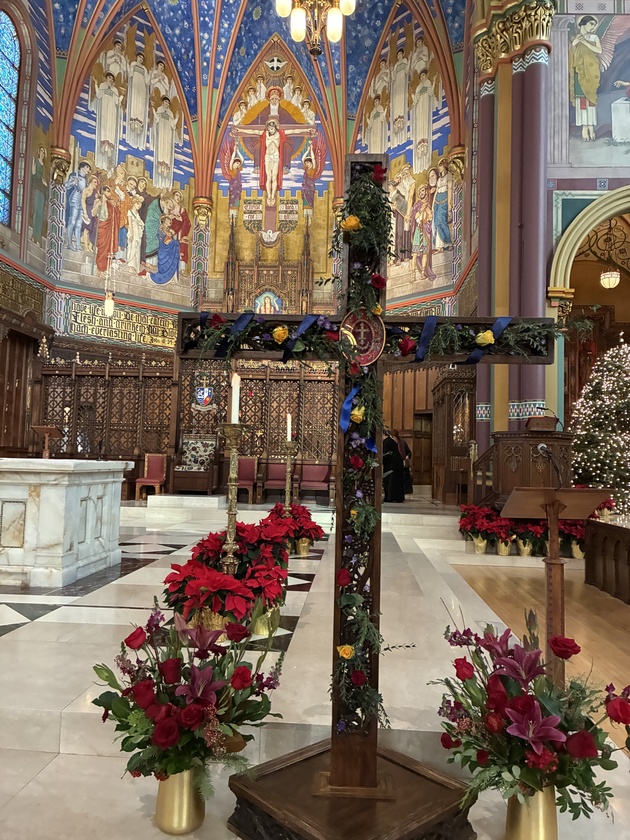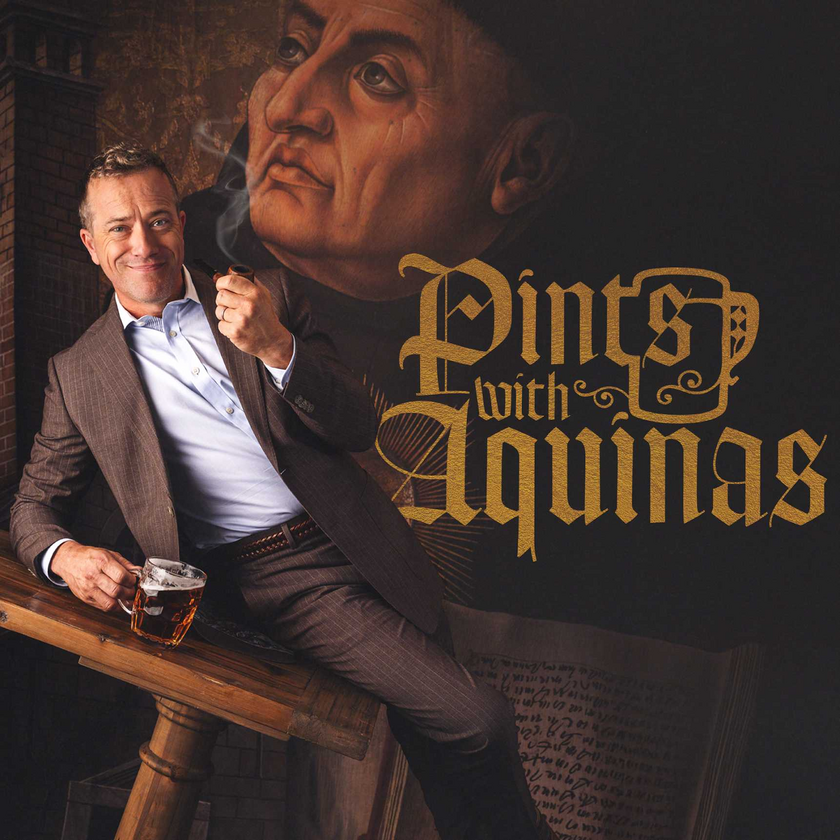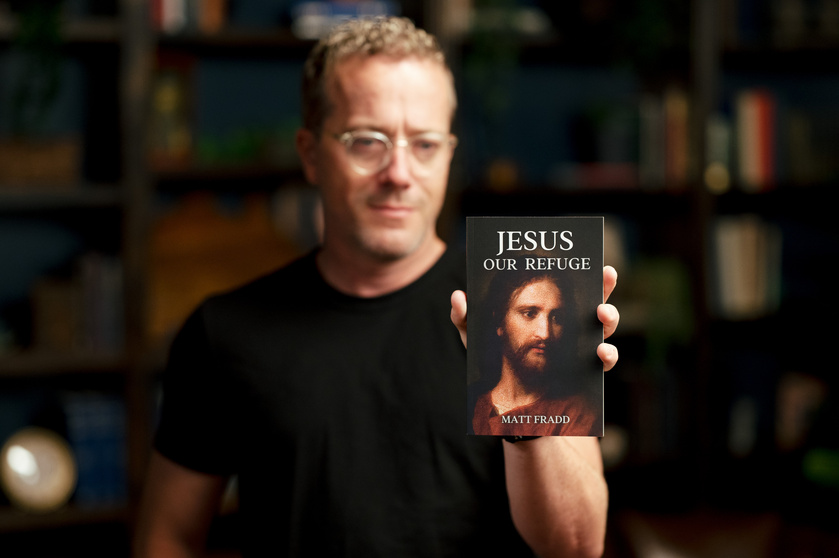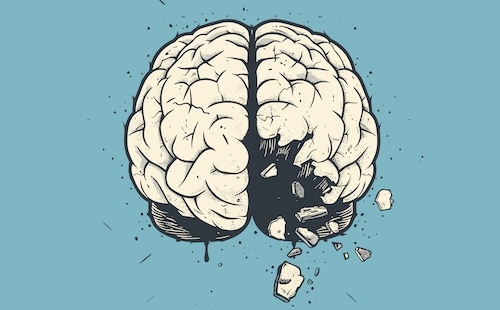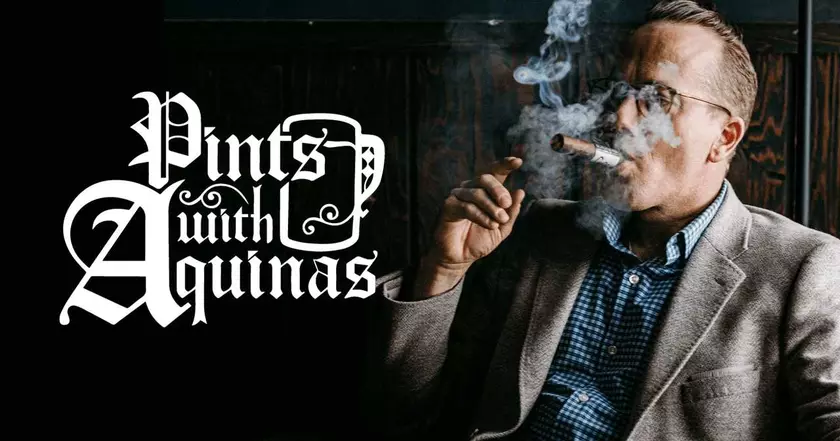Pop-Cultured Catholic #17: Halloween, the “Night on Bald Mountain” to All Saints’/Souls’ Day’s “Ave Maria”
Now, I am ready to cap off this month’s horror-themed marathon pop-culture posts by delving into my all-time favorite anthology film, Disney’s “Fantasia”.
The 1940 “Fantasia” film and its sequel “Fantasia 2000” are love letters to both animation and classical music, providing an anthology of segments that each consist of silent animation set to a famous musical piece. In the first film, Paul Dukas’ “The Sorcerer’s Apprentice” is used to create one of Mickey Mouse’s most famous shorts. Amilcare Ponchielli’s “Dance of the Hours” is whimsically performed with dancing cartoon ostriches, hippos, elephants, and alligators. There is a marriage between Ludwig van Beethoven’s “The Pastoral Symphony” and icons of Greek Mythology. In one of my favorite parts, Igor Stravinsky’s “The Rite of Spring” is reimagined as an artistic narrative of the dinosaurs’ rise and fall. And so on.
For the 1940 film’s grand finale, we get an extended sequence incorporating both Modest Mussorgsky’s “Night on Bald Mountain” and Franz Schubert’s “Ave Maria”, back-to-back. The scene begins with a surreal expressionist-drawing of a lone mountain set, which gloomily towers over a small town in the moonlight. The top of the highest peak suddenly unfurls to reveal the wings of a gigantic devil figure named Chernabog, after the alleged Slavic god of darkness. Chernabog’s hands reach out to blanket the whole town in a shadow, under which restless souls are stirred from their graves. The ghosts soar up to Chernabog, who conjures up a great fire and all kinds of hell creatures to accompany them. What follows is a macabre spectacle full of nightmarish imagery. However, Chernabog’s “party” is interrupted by the ringing of church bells and a flashing light. Repulsed by these, Chernabog and his demons recoil back into the mountain, and the ghosts peacefully hover back towards the valley. When “Ave Maria” arrives to supplant “Night on Bald Mountain”, night turns to dawn. In the glimmer of sunlight, we follow a procession of robed nondescript figures carrying torches through a beautiful landscape of forests, rivers, and stonework. When the sung prayer to our Blessed Mother finishes, the sun rises over the hills and makes the final shot of the entire film.
While it is common knowledge that the juxtaposition of “Ave Maria” is meant to illustrate good vanquishing evil, as stated by the film’s narrator, this sequence has also made me think of Purgatory… fitting for All Souls’ Day. When I look at the soothing, peaceful, and holy imagery of the path taken by those torchbearers, a part of me likes to interpret those travelers as souls going through their final cleansing by Christ’s grace in Purgatory. That is, before they finally enter the state of Heaven, akin to the bright sun rising from behind the hills to meet the audience. While I am likely reading way beyond what Disney intended, I have held that comparison for many years. Quotes describing the benefits of prayers and Mass for the “Church Suffering” in Purgatory have been attributed to Saints like Padre Pio: “More souls of the dead from Purgatory than of the living climb this mountain to attend my masses and seek my prayers”. At times, I also heard about certain saints’ alleged private revelations, that Purgatory can be experienced on many levels. For some who are already so close to God, the remainder of their time in Purgatory almost feels like Heaven. But for those who grievously sinned, barely repented, and still have yet to harbor perfect contrition, their cleansing in Purgatory may initially feel like stepping a toe into Hell, albeit with some joy that they are ultimately saved. So when the church bells toll, I imagine this not only driving away Chernabog and the other demons, but also drawing once restless souls to receive their grace at Mass… souls that otherwise would have been joining Chernabog’s ranks forever. They continue the next leg of their purification journey, processing through the valley as peaceful torchbearers. Heaven is not too far away now, and the promise of bodily resurrection awaits, the final victory over death.
This clash of imagery between “Night on Bald Mountain” and “Ave Maria” closely mirrors that between the trappings of All Hallows’ Eve and the celebration of All Saints’/Souls’ Day immediately afterwards. Leading up to our remembrance of the saints in Heaven and the faithful departed still in Purgatory, Halloween’s trappings depict a convergence between the planes of the living and the dead. Not only that, they put on a grandiose show of all the macabre horror tropes. It is as though the forces of death, decay, and evil are all convening to make a brazen stand, just like the “Night on Bald Mountain”. But no matter how much of a dark spectacle is conjured up, it will always give way to the commemoration of our saints and faithful departed, plus the hope for salvation and resurrection. Those shall have the final say, just like the “Ave Maria”. I have seen many Christians including Catholics have mixed thoughts about incorporating the deathly and devilish imagery into our All Hallows’ Eve celebrations. As for me, I think the intent behind the depiction matters. Is one portraying it to glorify what those monstrous things would represent at face value? Or is the idea to express that such things can be faced, to represent what will be supplanted on the following holy days, etc.? Christopher West shares a similar sentiment as me in a video, which I will link.
Overall, if had to argue the value of good horror media, one of my main statements would mirror Neil Gaiman’s quote when he paraphrased G.K. Chesterton’s wisdom: “Fairy tales are more than true… not because they tell us that dragons exist, but because they tell us that dragons can be beaten". If I may make a similar statement in the same vein: “The horror genre is invaluable… not because it tells us we should be afraid of monsters, but because it tells us that our fears of monsters should be faced”. Besides the possibility for monsters to be defeated, it is in facing these monsters that one can discover important questions, life lessons, and cautionary tales. In this month’s prior posts, I examined the clashing imagery between Christ’s Resurrection/Eucharist and vampires like Count Dracula, the questions posed by Shelley’s “Frankenstein” and Crichton’s “Jurassic Park” about our growing responsibilities with scientific advancement, the battle between despair and repentance in the video game “Silent Hill 2”, and a “Primal” episode’s story of a witch discovering agape love from her own tragedy plus her empathy with a caveman and a dinosaur. Even before this marathon, I reviewed the animated video game movie “Resident Evil Damnation”, which uses weaponized lab-grown monsters to tell a story of just causes being defiled by unjust warfare. And arguably, the original 1954 “Godzilla” film could be considered a horror film, with how its monster is used to convey a haunting allegory for nuclear warfare. These are a far cry from counterfeit horror media, which just act as mindless gorefests and/or wallow in images of depravity for its own sake. That is, rather than telling a worthwhile story or at least providing a genuine thrill ride with engaging atmosphere/suspense/scares.
Before I start sharing supplementary clips, here are some additional trivia, details, and artistic content relating to this...
1.) Due to production difficulties, the “Ave Maria” portion of the final sequence was almost not finished on time, with the final completed shots reportedly being delivered just four hours before the film’s premiere. If that it did indeed play out as reported, then it truly was a “Hail Mary” moment in more ways than one.
2.) During the production of Disney’s “The Hunchback of Notre Dame”, the filmmakers cited the earlier endeavor with “Night on Bald Mountain”/“Ave Maria”, to help show the studio higher-ups how they could pull off the planned “Hellfire” villain song for Judge Claude Frollo. Both feature dark and hellish imagery, explicit religious references including the Virgin Mary, and even some risqué imagery. That is namely, certain forms which Chernabog’s demons briefly take at points and how Frollo’s lust for Esmeralda is conveyed.
3.) Chernabog had become a popular enough villain to make appearances/cameos in other Disney properties, such as “The House of Mouse” TV show, its direct-to-video Halloween special titled “Mickey’s House of Villains”, the “Michael and Mickey” short featuring Michael Eisner, the Kingdom Hearts video games, ABC’s “Once Upon a Time” TV show, and Disney’s 100th anniversary short “Once Upon a Studio”.
4.) Near the end of Chernabog’s portion, there is one animation detail I did not notice until recently, when I saw someone else pointing it out. As one YouTuber stated, “his wings are so translucent you can see the clouds behind them! It makes chernabog look very fragile in the morning light, I really love it. This was always my favorite scene, it made the rest of the short much less frightening to me as a kid, even chernabog has to sleep! :)”
5.) At one point, someone attempted to take an abridged version of Chernabog’s sequence, mute the music, then add sound-effects throughout. The result is definite nightmare fuel. I found a copy of the video on Vimeo, and I don’t know if it available elsewhere.
6.) My online friend, Jacob Below, also once dressed as Chernabog for Halloween, befitting this point. I will link a video he made of it here too.
7.) As a final bonus, I learned that the acclaimed Italian opera tenor, Luciano Pavarotti, sung a rendition of “Ave Maria”. And I found a clip of it on YouTube.
Here are some of the clips I referenced…
1.) “Fantasia (1940) Night on Bald Mountain (1/2)”
https://www.youtube.com/watch?v=b756FPiLlp8
2.) “Fantasia (1940) Night on Bald Mountain (2/2)”
https://m.youtube.com/watch?v=bP7kE_cncEs
3.) The “Ave Maria” Portion
https://www.youtube.com/watch?v=8xXkB-ncF2g
4.) Christopher West’s ”You Haven't Heard This Take On Halloween.” Video on His Theology of the Body Institute Channel
https://m.youtube.com/watch?v=UNKnQQpyKxo
5.) Abridged “Night on Bald Mountain” Sequence With Sound-Effects Replacing the Music
https://vimeo.com/70911597
6.) Chernabog’s Cameo Alongside Michael Eisner in 1989’s “Michael and Mickey” Short
https://youtu.be/MHBNDgP5vps?feature=shared&t=90
7.) The “It’s Our House Now” Song in “Mickey’s House of Villains”, Which Features Chernabog Throughout
https://m.youtube.com/watch?v=AOawpwsa6vg
8.) Chernabog’s Boss Fight in the First “Kingdom Hearts” Video Game
https://m.youtube.com/watch?v=yFajPxyd7N8
9.) Jacob Below’s Chernabog Costume For 2022’s Halloween
https://m.youtube.com/watch?v=YQL7k42sMUc
10.) Pavarotti Singing “Ave Maria”
https://m.youtube.com/watch?v=XpYGgtrMTYs



